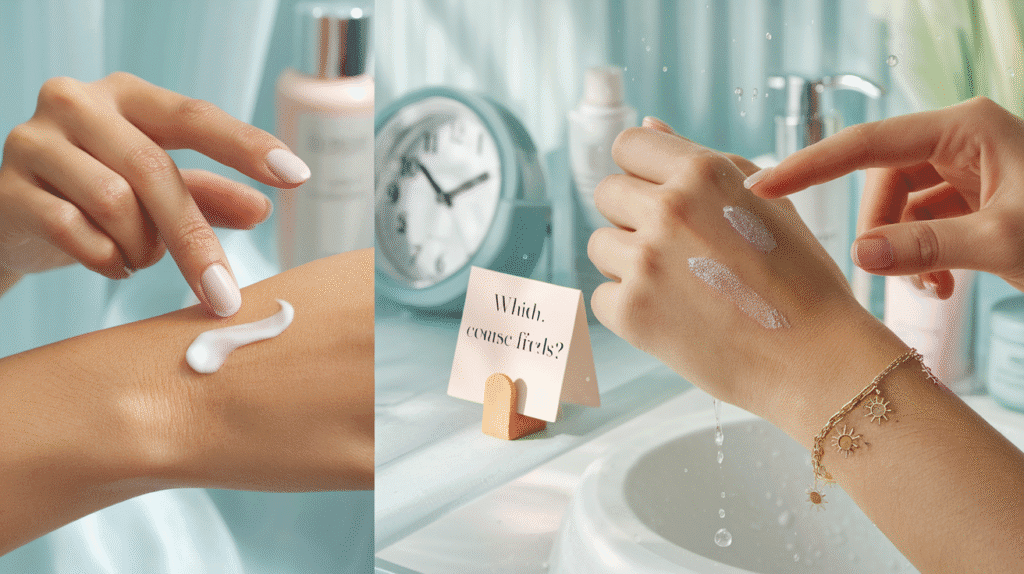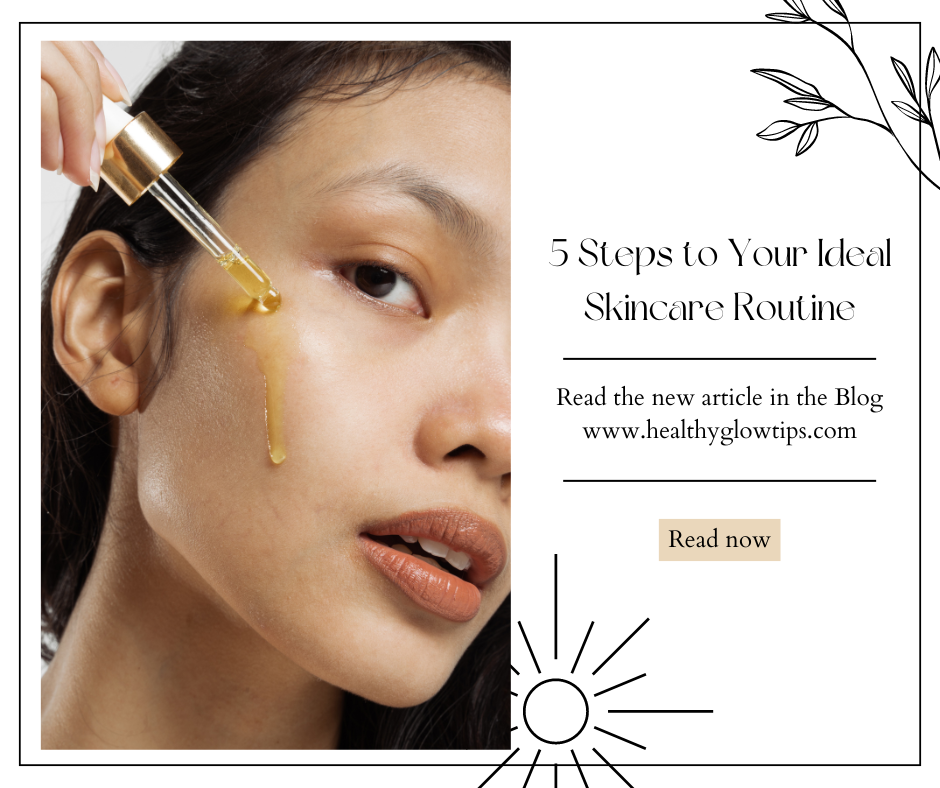How to Decide: Moisturizer or Sunscreen First?

Introduction
Whether or not to put moisturizer or sunscreen on first tends to baffle skin-care enthusiasts. This “small” choice can profoundly affect the efficacy of your skincare routine. So let’s get into it, but first we need to know what goes on our skin and in which order as this can be crucial for its health and look.
Understanding Sunscreen
What is sunscreen?
Sunscreen is a protective lotion that’s applied to your skin to help block the ultraviolet (UV) rays from the sun. It has active constituents which absorb or reflect the UV rays otherwise able to penetrate and harm your skin.
Advantages of wearing a sunscreen
- Prevents sunburn
- Lowers the chance of developing skin cancer
- Defends against early signs of aging
- Helps with even tone skin tone
Various types of sunscreens
Broadly speaking, sunscreen falls into one the following categories:
- Chemical sunscreens: These absorb UV rays and change them into heat.
- Physical sunscreens: These act as a barrier on top of the skin to reflect UV light.
Understanding Moisturizer
What is moisturizer?
A moisturizer is a quintessential skincare product designed to plump and nourish the skin. It’s great for preserving the skin’s moisture barrier, leaving it soft, supple and healthy.
Why use a moisturizer
- Improves skin hydration
- Enhances skin texture
- Helps defend skin barrier
- Minimizes the look of fine lines
Various Moisturizers
These forms of moisturizers are:
- Lotions
- Creams
- Gels
- Oils
How Sunscreen Works
The mechanism of suncreen protection
Sunscreen acts as a barrier between the skin and the sun, absorbing or reflecting the UV rays. Chemical sunscreens soak into the skin and transform UV rays into heat; physical sunscreens sit on top of the skin and send UV rays back from whence they came.
SPF explained
Sun Protection Factor (SPF) How long a sunscreen will protect you from UVB rays compared to bare skin. For instance, SPF 30 is 30 times longer than you skin would take to burn if you didn’t have any sunscreen on.
How Moisturizer Works
Place of moisturizers for the hydration of skin
Moisturizers work by:
- Humectants: These ingredients draw water into the skin.
- Moisture-locking (occlusive)
- Emollients to soften the skin
In putative moisturizers
- Hyaluronic acid
- Glycerin
- Ceramides
- Petrolatum
- Natural oils
Order of Application Effects
Why order matters
How you apply the products might impact how well they all sink into the skin and do their thing. With some products, the order can make a difference in their effectiveness.
What if I apply sunscreen first?
If you apply sunscreen afterward, it could form a barrier, blocking your moisturizer from hydrating your skin as well as it can. That could mean less moisture and possibly less protection from the sunscreen.
What if I used moisturizer first?
When the moisturizer is applied first, it ensures your skin is receiving hydration and nutrients from the decent skin products. If sunscreen is subsequently applied, however, it can effectively protect your skin without disruption.
Expert Recommendations
More advice from dermatologists on which to apply first
And most dermatologists say to apply moisturizer before sunscreen. This helps your moisturizer to be absorbed completely, resulting in a smooth surface for sunscreen.
Study and study findings
The moisturizer-first approach is backed by research. A study in the Journal of Cosmetic Dermatology found that there was no big difference in SPF as long as they used a broad spectrum sunscreen, regardless of whether the moisturizer was first.
How to Apply Step by Step
Preparing your skin
- Cleanse your face thoroughly
- Layer on any serums or treatments
- Wait for products to absorb
The correct way to apply moisturiser
- Be sure to only use a tiny drop of moisturizer
- Dot it around your face
- Massage it up in a circular motion
- Keep aside to soak for two or three min.
How to correctly use sunscreen
- Dab a fair amount on your fingers
- Spread it evenly on your face and neck
- Don’t overlook frequently neglected spots such as around ear and the hairline
- Let set for a couple of mins befor applying makeup
Reapplying throughout the day Keep applying.
- Apply sunscreen every 2 hours while out in the sun
- When you’re wearing makeup and on the go and need to do a touch up here and there, opt for a powder or mist with SPF in it
Addressing Common Concerns
For acne-prone skin concerns
To prevent does moisturizers or sunscreens from clogging your pores, choose light, non-comedogenic products, especially for those with acne-prone skin.
Oily Vs Dry skin reflections
- Oily skin: gel-based moisturizers and oil-free, lightweight sunscreens
- Dry skin: Apply richer creams and moisturizing sunscreens
Makeup application tips
Wait about five minutes after you put sunscreen on to apply your makeup, so the sunscreen has time to absorb.
Conclusion
When it comes to moisturizer vs. sunscreen, in general, you should apply moisturizer first, then sunscreen is ideal. But any routine is only as good as it is on your individual skin type and concerns. Try various methods and products to see what works best for you.


